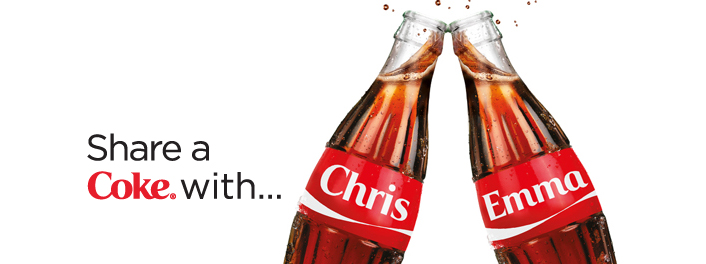The Millennial Problem
The digital age has been upon us for some time now, and by all appearances, it is here to stay. Consumer demands now function within the context of a globalized market. The previous norms and boundaries of the consumer/producer relationship no longer exist … new needs are the norm, and they must be met creatively like never before.
A central component to the new needs of consumers is the notion of value. Yet, it is not what you as a producer or service provider value, nor what you think your market segments should value. Today’s standard of value is established by the consumer.
The market consumers of today do not come from the same cookie cutter generations of the past. They grew up under the unique duality of advanced technological freedom and the very real constraints of an economic downturn. They are the Millennials. They value social technology, transparency and utility … and they are here to stay.
This brings us to the all-important question of the digital age.
Do You Have a Millennial Problem?
A great number of companies and industries have found it challenging to adjust to the changing times. From large insurance companies to the food and beverage industry to the real estate market, the greater business community has, at times, appeared oblivious to the wants and needs of the largest consumer generation in the United States (80 million according to the U.S. Chamber of Commerce Foundation).
Market specialists from all industries have embarked upon a valiant quest to crack the Millennial code. Some have succeeded; many have failed. Yet, before we can crack the code, we must understand a bit more about today’s so-called “selfie” generation.
Let’s take a look!
Millennials: Who Are They and What Do They Value?

By most accounts, Millennials are the offspring of the baby boomer generation, typically falling within an age range of 18-34. Generation Y, as they are also known, has a strong independent streak that has puzzled marketers for years. Millennials believe in education, but also in practical experience. Traditional “book and lecture” training has been cast aside in favor of “hands on” engagements. Millennials also favor a work-life balance that is heavily tilted towards life.
Causes are key for this generation, and as such, Millennials desire to be a part of a community with a purpose. They hold the most abundant quantity of purchasing power, and they learn to use this power to purchase with a purpose. As Millennials grew up in the era of socially smart technology, they have integrated it with their consumer expectations and look to interact with known “social influencers.”
This means that the research, purchase and review process is integrated by Millennials into one seamless Omni Channel system that happens at the speed of smartphone light. Information is easily accessible across a multitude of social platforms, and Millennial consumers are more informed than ever. They want the ability to enter and leave channels at their own discretion, and they want company support along the way. They will let you know, in real time, their satisfaction (or lack thereof) with a product or service, and they are likely to be inspired by smart social media campaigns.
So, which Millennial values do you need to incorporate A$AP?
A good place to start is with the “abilities.”
Organic marketability, sociability, product sustainability and social network capability.
By integrating and performing these functions at both a high level and efficient level, you can build the foundation for what is ultimately the key to cracking the Millennial code:
Personalization.
What is personalization and how can it be successfully applied to your Millennial strategy?
Let’s take a look!
The Personalization Preference

While a multitude of Millennial values influence purchases, personalization is the glue holding the foundation together. Its application is not only a great way to engage the market – especially across digital platforms – it often proves to be the easiest and most effective method of value creation.
From online dating with match.com to picking the topping for your pizza with the Domino’s order app to designing your own footwear with Nike or Adidas, consumers want to play a larger role in the creation of the sales process. In granting Millennials the ability to influence the process, producers empower the market, build relationships and increase the likelihood of building long-term purchasing loyalty.
Yet, it is a telling sign that certain markets have resisted the call to adapt. Many marketers and industry experts have attempted to equate the Millennial desire for customization to that of an ego problem. The typical example goes something like this:
“Millennials aren’t buying [X thing] because they are the generation of ‘me’, and not ‘we.’”
This is standard industry rhetoric, and it continuously fails to realize that Millennials grew up with unprecedented technological progress and variety. You would be hard-pressed to find a younger Millennial who remembers what the world was like before smartphones, tablets and the internet. From ordering to marketing to product creation, personalization fulfills the dual Millennial need of interpersonal purchase relationships and individuality.
How Can You Begin to Implement Personalization Strategies?
The easiest way is through demographic tracking and Omni Channel personalization solutions. By employing various methods and techniques, digital marketers can create unique customer profiles based on preferences, behaviors and social groups (not life stage). This data can then be applied to the most advanced CRM software and self-service platforms to create the diverse options that Millennials crave.
Share a Coke

A simple customization example, but nonetheless effective, was the recent personalization marketing campaign put into effect by Coca-Cola. The “Share a Coke” campaign was implemented in the United States during the summer of 2014 as a Millennial-focused personalization strategy. The company removed its famous and highly recognizable 20-ounce Coke label and replaced it with individual names and phrases from around the world. Consumers were encouraged to look for and purchase the name of a family member, friend or loved one and “Share a Coke” with them.
What was the market response to this unexpected personalization?
This Millennial-focused campaign helped Coke acquire 28% more customers than during to the same comparable period in 2013!
Coca-Cola, determined to align itself and its product with Millennial values, also dedicated a significant portion of its resources to social media networking and relationship building. Tapping into the Millennial desire for valuable community-centric experiences, Coca-Cola encouraged Coke drinkers to use social media to share a picture of their personalized Coke bottle with the hashtag #ShareACoke.
This social tag was shared more than 250,000 times! The consumers, rather than the company, began to organically push the promotion of the campaign across multiple social media platforms. By creating added value through self-expression and social experience, Coca-Cola was able to sell its market not just on a product, but on being a member of a community.
The “Share a Coke” campaign is a perfect example of the potential for consumer driven success in the digital age.
While Coca-Cola is a shining example of Millennial personalization, we should also focus our attention on other important Millennial values.
To achieve this goal, let’s take a look at a Millennial favorite … fast casual dining.
Fast Casual Dining: Pioneering Value

There is no clearer case of the “Millennial problem” than that of quick service dining provider, McDonald’s Corporation.
Between 2011-2014, the average number of consumers ages 19-21 that visited McDonald’s monthly fell by almost 13%. Perhaps even worse, the number of consumers ages 22-37 who visited McDonald’s monthly remained entirely stagnant … as in zero growth, zero decline.
Simply. Flat.
Corroborating these statistics is an internal McDonald’s memo admitting that the company “doesn’t even rank among the demographics top 10 restaurant chains…”
This is McDonalds we are talking about here! The world’s largest restaurant company by revenue!
What happened?
Simply put, when the needs and values of customers changed, McDonald’s failed to adapt.
Do you remember the Millennial values we previously discussed? Those of transparency, social relevance, personalization, etc.? Well those are exactly the values fast casual dining has capitalized on over the last five years. Techniques originally pioneered by fast casual service provider Chipotle are now the mainstay expectation for Millennial diners. What are a few of the ways in which Chipotle has met the needs of the Millennial market?
1) Personal Cooking Stations: Chipotle orders are always prepared right in front customers using only the freshest and most sustainable ingredients. The liberty of choice is highly valued by Millennials, and it is a major selling point for the company. What is presented to the customer is a truly customizable meal, one built by them to fit their perfect flavor preferences. It is a service provided to meet their specific needs, and this, in turn, helps build consumer and brand loyalty.
2) Utilizing Social Influencers: Chipotle recently gifted “burrito membership cards” to select public figures, including celebrities and athletes. The card provides the owner with a daily, free burrito for a limited duration of time. How does a burrito card for celebrities help market to Millennials? Well, it creates the image of exclusivity and targets social media influencers. By targeting public figures of the Millennial generation, Chipotle has created the circumstances that allow for genuine and organic social media marketing to occur (as evidenced in this Bryce Harper tweet).
3) Social Sustainability: Chipotle recently wrapped up (excuse the pun) an effective Millennial marketing effort with the release of a comedy mini-series entitled Farmed and Dangerous. Recognized for its fresh and sustainable ingredients, Chipotle highlighted these socially conscious values throughout the series and also utilized other important aspects of Millennial culture, including:
- Web streaming technology (think Netflix)
- Transparency/social awareness
- Interactive mobile applications
4) App Ordering: A digital age necessity focusing on convenience and technology. Mobile apps have served to help Chipotle further cement Millennial loyalty and brand value.
As you can see, fast casual dining has effectively succeeded in capitalizing on Millennial markets. Many companies, such as Chipotle, recognized Millennial value long before their market competitors. For their part, McDonald’s has now instituted various changes in an attempt to adapt to market demands and reach Millennials.
You can now find a fully customizable “McWrap” (a quasi-burrito/sandwich) in all locations as well as a personalized ordering application in select locations.
Time will tell if these efforts are too little too late.
To Conclude….
The incorporation of Millennial value drivers will be a necessary element of any viable marketing plan in the digital age….
Now that you have a bit more information on what drives the “selfie” generation, you can feel confident in your ability to succeed where McDonald’s failed and begin cracking the code of tomorrow’s trillion-dollar demographic.














